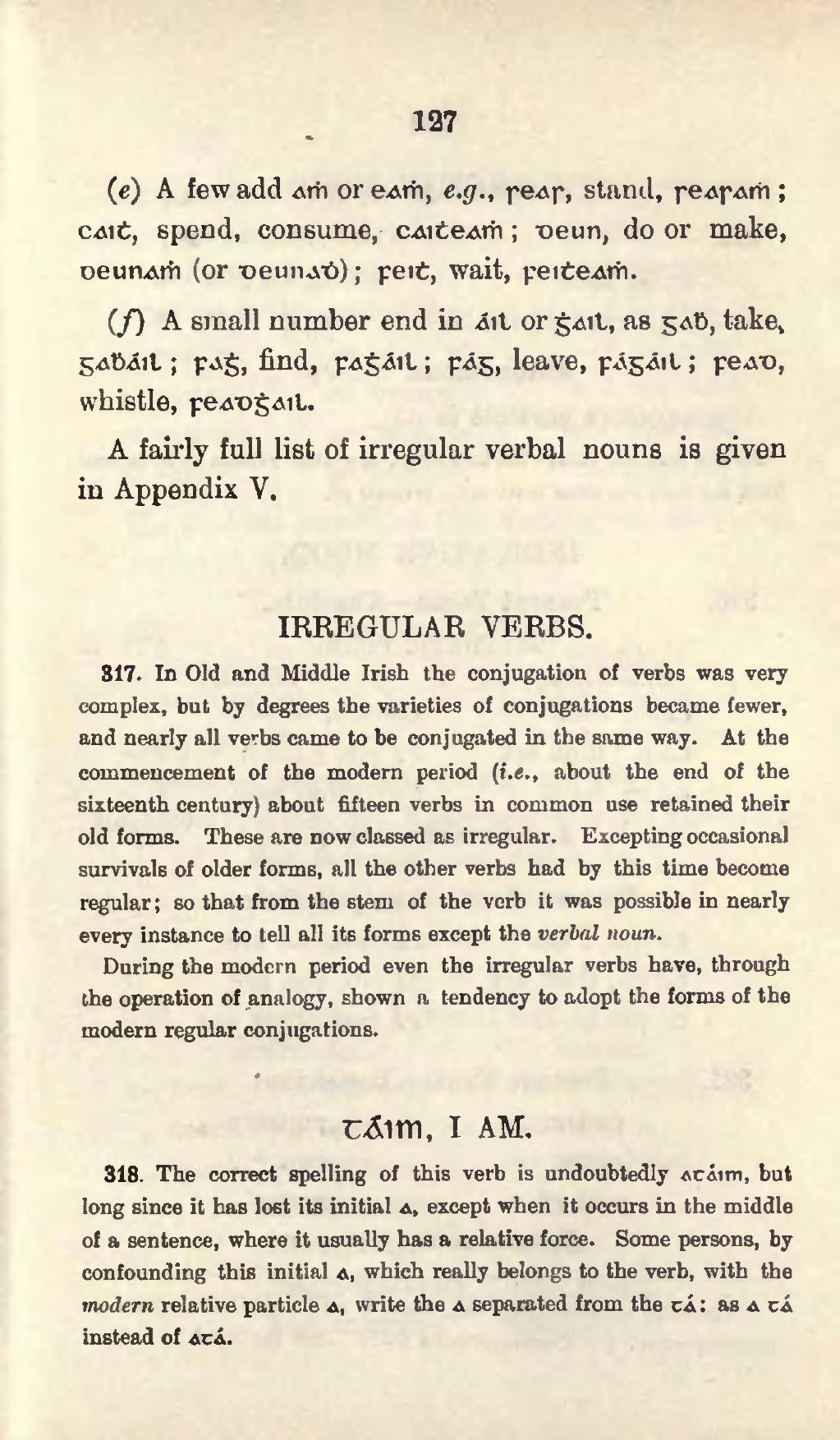(e) A few add aṁ or eaṁ, e.g., seas, stand, seasaṁ; caiṫ, spend, consume, caiṫeaṁ; deun, do or make, deunaṁ (or deunadh); feiṫ, wait, feiṫeaṁ.
(f) A small number end in áil or ġail, as gaḃ, take, gaḃáil; faġ, find, faġáil; fág, leave, fágáil; fead, whistle, feadġail.
A fairly full list of irregular verbal nouns is given in Appendix V.
IRREGULAR VERBS.
317. In Old and Middle Irish the conjugation of verbs was very complex, but by degrees the varieties of conjugations became fewer, and nearly all verbs came to be conjugated in the same way. At the commencement of the modern period (i.e., about the end of the sixteenth century) about fifteen verbs in common use retained their old forms. These are now classed as irregular. Excepting occasional survivals of older forms, all the other verbs had by this time become regular; so that from the stem of the verb it was possible in nearly every instance to tell all its forms except the verbal noun.
During the modern period even the irregular verbs have, through the operation of analogy, shown a tendency to adopt the forms of the modern regular conjugations.
TÁIM, I AM.
318. The correct spelling of this verb is undoubtedly atáim, but long since it has lost its initial a, except when it occurs in the middle of a sentence, where it usually has a relative force. Some persons, by confounding this initial a, which really belongs to the verb, with the modern relative particle a, write the a separated from the tá: as a tá instead of atá.
